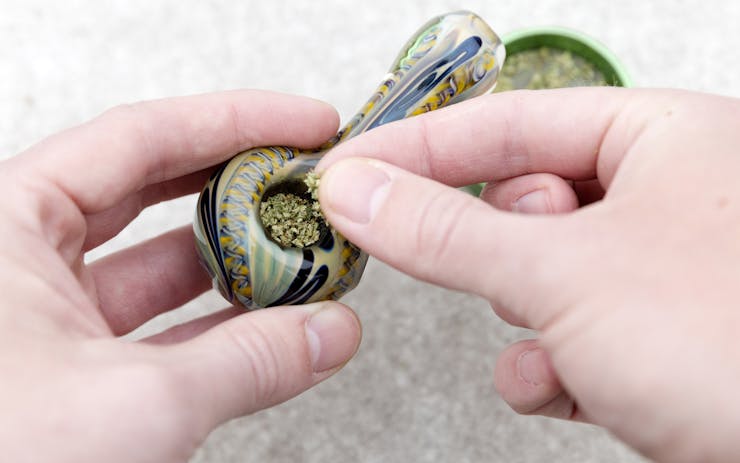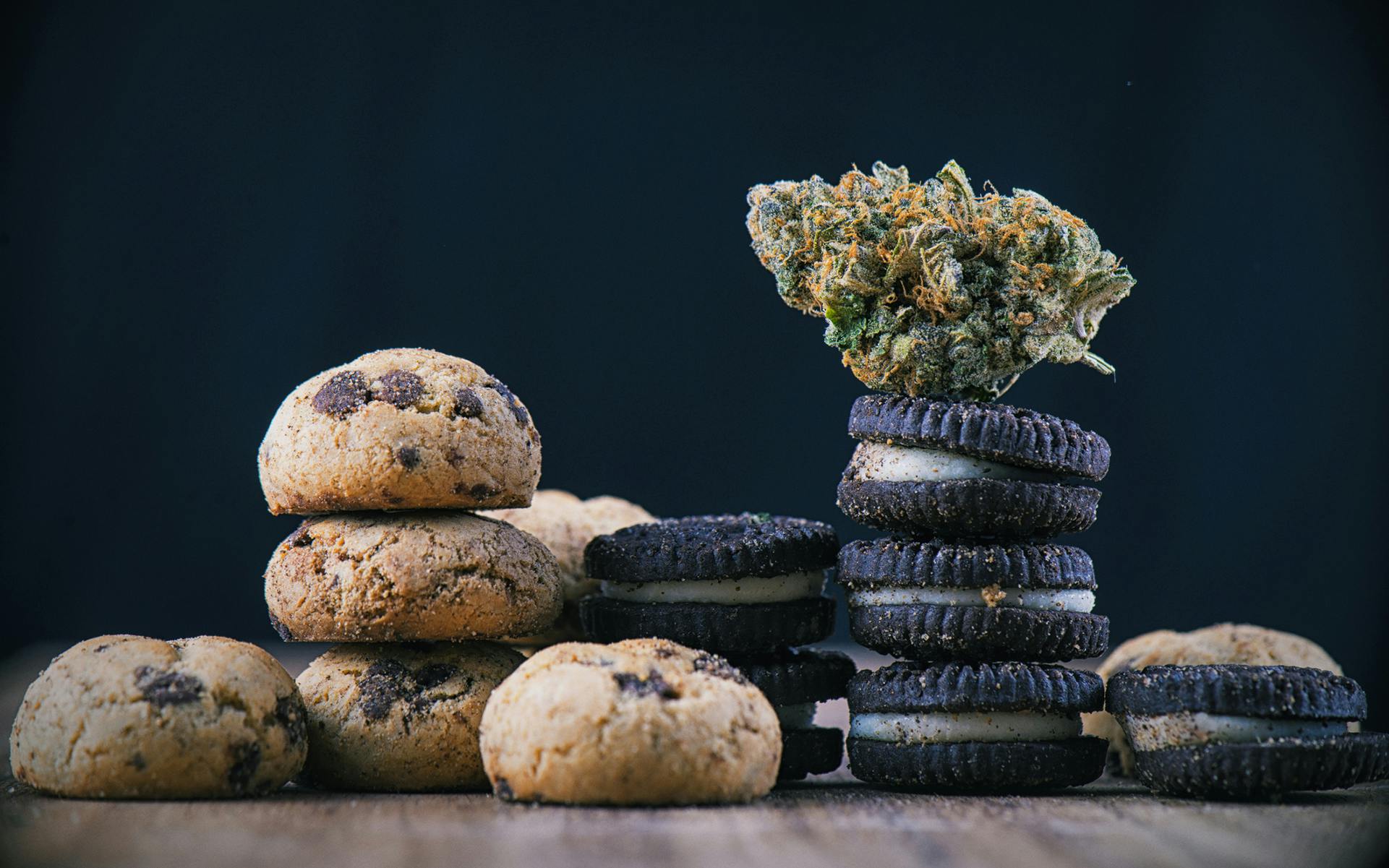Dosage is the key factor in achieving the most benefits and least adverse effects of cannabis. After following thousands of patients using medical cannabis for eight years, I’ve observed that dosing cannabis is unlike any therapeutic agent to which I was exposed in my medical training. A basic understanding of the key characteristics of cannabis dosing can empower you to make the most of this incredibly versatile, safe, and effective herb.
Some patients effectively use tiny amounts of cannabis, while others use incredibly high doses. I’ve seen adult patients achieve therapeutic effects at 1 mg of total cannabinoids daily, while others consume over 2,000 mg daily without adverse effects. And while a 2000-fold dosing range is unusual for a medication, researchers have failed to kill monkeys at doses even 300 times higher than the highest dose I’ve observed in the clinic.[i]
Multiphasic dose-response relationships
Within this unusually broad dosing range, cannabis exhibits an unusual relationship between the dose and the expected response. For most medications, a higher dose will result in a stronger therapeutic effect and a higher likelihood of adverse effects; this is described as a monophasic dose-response relationship. Cannabis simply does not follow this pattern.
For most cannabis consumers, gradually increasing their dose will at first result in stronger effects; but after a certain point (unique to each individual), subsequent dosage increases can result in weaker and weaker therapeutic effects, accompanied by an increase in unwanted effects.
Consumers who continue to increase their dosage to very high levels can often reclaim some or all of the previously lost benefit, and sometimes find additional therapeutic effects not achieved at the lower doses. Of course, ultra-high doses are much more expensive and usually produce more unwanted side effects. Most patients do much better at the lowest effective dose.

The medicinal benefits of cannabis may start to diminish as the dose is increased. (Dr. Sulak/Healer.com)
For many cannabis users, this means that less can be more. In a study of 263 opioid-treated cancer patients with poorly controlled pain, the group receiving 21 mg of combined THC and CBD each day experienced significant improvements in pain levels, more so than the group that received 52 mg daily. The group that received 83 mg daily reduced their pain no better than placebo, but experienced more adverse effects.[ii]
Cannabis has the ability to produce opposite effects in different people, with different strains, and at different dosages.
How is this possible? The endocannabinoid system is a sensitive, highly tuned physiologic infrastructure designed to maintain balance at a cellular level. When the cannabinoid receptors become overstimulated by high doses of cannabis, the cells pull the receptors inside, where they are either recycled or degraded.[iii] As cannabinoid receptor levels diminish, the effects of cannabis will diminish as well, even (or especially) in the face of dose escalation. This is known as “tolerance-building,” something that many regular cannabis users have experienced.
Therapeutic window
The term “therapeutic window” describes the range between the lowest effective dose and the dose that produces unwanted or intolerable side effects. People who have little or no experience using cannabis typically have a very narrow therapeutic window, while regular users develop a wider therapeutic window. This is due to the fact that individuals build tolerance to the various effects of cannabis at different rates, and most build tolerance to the unwanted effects faster than the desired effects.
Shop highly rated dispensaries near you
Showing you dispensaries nearBidirectional effects of cannabis
Cannabis also has the ability to produce opposite (or bidirectional) effects in different people, with different strains, and at different dosages. For example, anxious people who take cannabis may relax while non-anxious people who take the same dose can become anxious. The same dose of two different varieties of cannabis can cause opposite effects – one might be an awakening strain and the other might put you to sleep.
When combined, CBD and THC can enhance each other’s benefits while reducing unwanted effects.
Interestingly, the symptoms of cannabis overdose closely mirror the symptoms one would expect cannabis to relieve at appropriate doses: nausea, vomiting, diarrhea, sweating, spasms, tremors, anxiety, panic attacks, paranoia, discoordination, and disturbed sleep. Extreme overdoses can lead to hallucination and even acute psychosis.
Fortunately, these symptoms are all self-limiting, and most people return to their normal selves within 12 to 24 hours. Even though a cannabis overdose may make a person feel like they’re dying, such an experience will cause no toxicity or permanent damage, except perhaps in people who have unstable cardiovascular or psychiatric conditions, or in the case of impairment leading to an accident.
Combining CBD and THC
CBD and THC have many overlapping therapeutic qualities, including relief of pain, anxiety, seizures, and nausea, although they work via different mechanisms of action. When combined, CBD and THC can enhance each other’s benefits while reducing unwanted effects, including the psychoactive or impairing effects of THC. This is great news for cannabis users who want health benefits while maintain optimal performance at home or work.
Ultra-low doses of cannabis can be extremely effective, sometimes even more so than the other extreme.
By adding CBD to THC, the therapeutic window, described above, becomes even wider. Consumers should know, however, that the total dose of cannabinoids needed to treat a symptom or condition will also likely increase.
For example, in a study of 177 patients with cancer pain, one group received an oral spray of THC, while another group received an oral spray of combined THC and CBD at an approximate 1:1 ratio. Both groups were allowed to gradually increase their dose until they experienced satisfactory relief. The THC group ended up using an average of 27 mg daily, while the CBD+THC group used close to 60 total mg daily, but the CBD+THC group had a superior reduction in pain.[iv] I’ve seen this in many patients–combine CBD and THC for optimal benefits, but be prepared to take (and purchase) higher overall dosages.
Ultra-low dosages
Some patients do well with ultra-high doses (hundreds or thousands of milligrams daily). THC consumers have to slowly work up to these high doses, but many patients can quickly reach high doses of CBD without adverse effects. On the other hand, ultra-low doses can be extremely effective, sometimes even more so than the other extreme.
Most people are surprised to learn that the therapeutic effects of THC-dominant cannabis can be achieved at dosages lower than those required to produce euphoria or impairment. Cannabis microdosing, taking a non- or slightly psychoactive dose for the purpose of improving heath and productivity, has been gaining popularity.
People report better mood, reduced anxiety, improved focus, enhanced resilience to stress, less pain (and/or less bothersome pain), and other benefits without any adverse effects. Most consumers find that 1-5 mg works well for this purpose. Some emerging evidence even suggests that a practice like this could be protective against the damage of a heart attack[v],[vi] or brain injury![vii],[viii],[ix]
Recommendations for new and experienced consumers
For new cannabis users, I abide by an old adage I learned from one of my geriatrics instructors: “Start low, go slow, and don’t be afraid to go all the way.” I’ve developed an easy- to-follow program to help find your optimal dose, along with other useful resources like a medical cannabis shopping guide, available free on Healer.com.
For existing users who may have built some tolerance to cannabis, I encourage you to try my 6-day sensitization protocol, which has helped thousands of people reduce their cannabis dose by 50% or more while improving the benefits. If you haven’t tried non-inhaled delivery methods such as tinctures or sprays, and if you haven’t experimented with the combination of CBD and THC, I suspect that both of these endeavors will help you continue to unlock the full power of this incredible herb.






